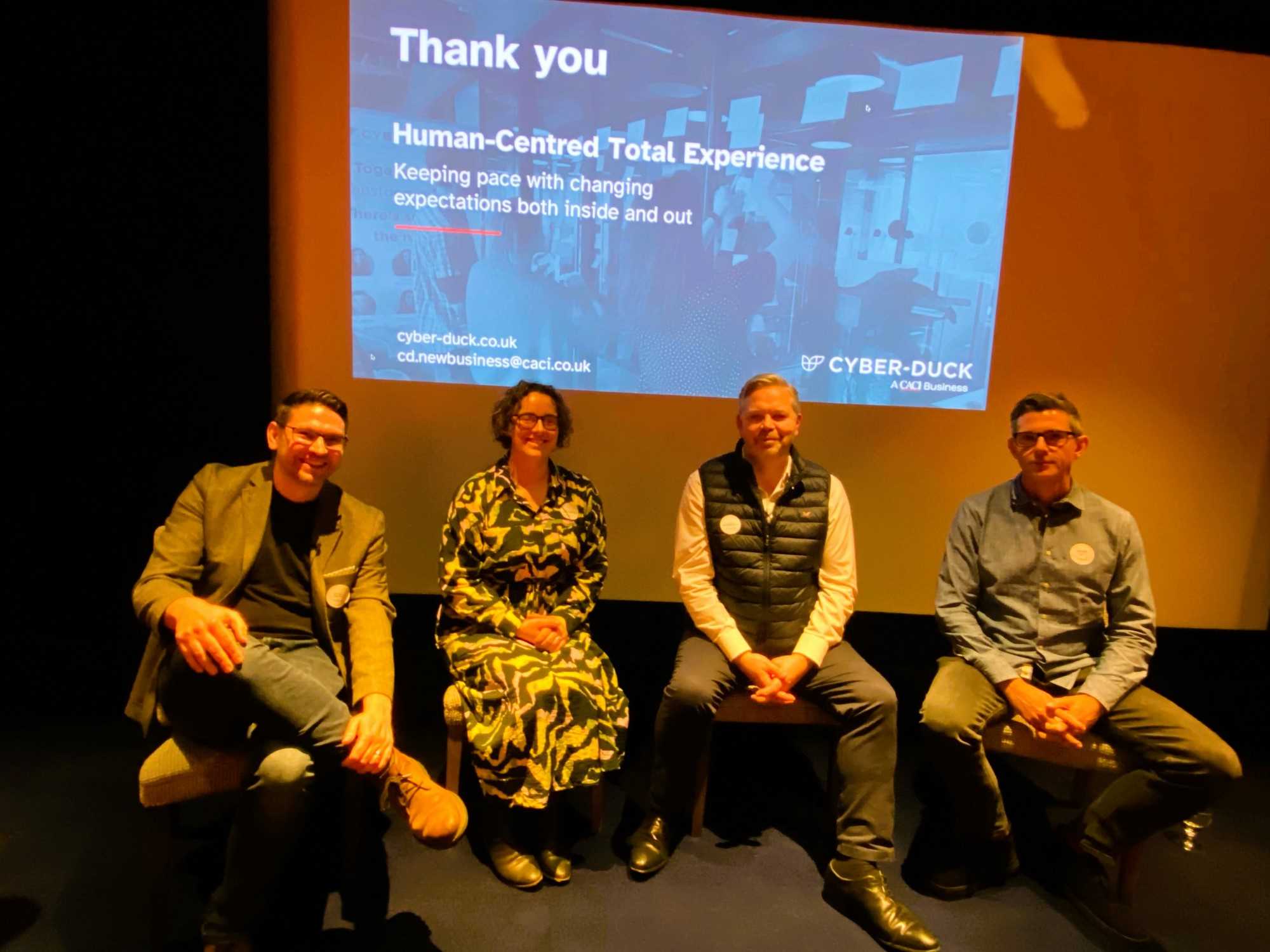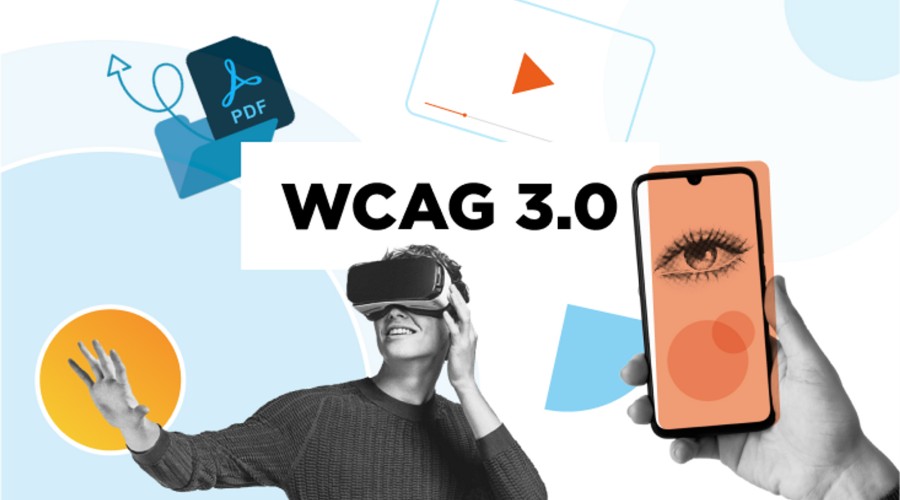“We’ve expanded our Design team to be ‘Design and Change Management’ to increase the likelihood of success”. Words from Mark Howell, BP’s Global Director of Service Design and Business Design, that neatly summed up our Human-Centred Total Experience event.
How can organisations deliver on Total Experience for all stakeholders when expectations are sky high? How do you balance competing priorities of CX and EX? What role might AI play in delivering on this?
These were the big questions I was excited to see discussed in a front of a packed room of CX, EX, UX and Service Design leaders at the second of our thought leadership breakfast events at London’s Charlotte Street Hotel. The speakers and audience members representing a diverse range of organisations from finance giants UBS, Deutsche Bank and Barclays, industry behemoths BP, Sky and Selfridges and not-for-profit heavyweights Save the Children and the NHS. Yet all face common challenges of ensuring experiences they design deliver best in class usability and desirability for long-term success.
So, what were the big takeaways?
Total Experience requires a holistic business-centric approach that rejects a zero-sum game
After coffee and a welcome by Chief Growth Officer, Siji Onabanjo, we kicked off with a presentation by our Chief of Strategy & Service Design, Ben Thomas and Service Designer, Alona Thomas. Their thesis? Experience design is often approached as a zero-sum game where for someone to win big, someone else loses.
They gave the example of the digitised UK passport service. It’s hugely sped up customer delivery. But passport price is constantly increasing and there's often little difference in delivery times between standard and fast-track, despite the latter costing nearly double. Running costs have also increased with complexity added into the previously centralised print and production process. And the debt management company where in one week a customer had bailiffs collect his car, received a court summons, and was sold a huge pay-day loan. Leading to his attempted self-harm, taking them to court and the haemorrhaging of staff due to these practices. Short-term profit, yet appalling CX and EX.
Instead, they defined Total Experience as delivering on business outcomes, not experience as an end itself. A Human-Centred Operating Model recognising no-one gets to be perfectly happy; quantitatively and qualitatively measures what’s working and has the necessary service design following behind to change it. Effectively ensuring if you want your system to deliver a Ferrari experience, you can’t have your factory floor set up to build Fords.
The message resonated with the audience, who we polled to ask what the biggest barriers would be to implementing Total Experience in their organisation. Leading by a mile at 63% was ‘Operational and business silos’, with ‘Inadequate data and systems’ at 33% and ‘Lack of strategic vision’ and ‘poor understanding of design thinking’ both at 28%. Company culture and budget trailing far behind.
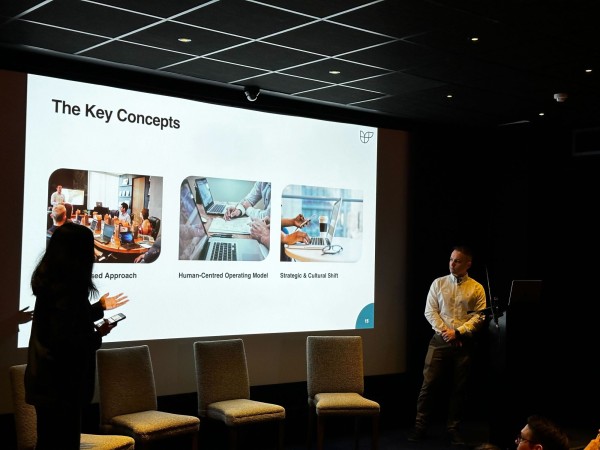
Service design experts Alona Thomas and Ben Thomas talk about how to avoid a zero sum game in Experience design
Customer experience and employee empowerment are hugely entwined
Next up, was proudly self-described ‘Grumpy Old Designer’ Matthew Baxter, Vice President of UX & Design from Deutsche Bank. He pondered on customer experience and what happens when something goes wrong, particularly in ‘edge’ cases.
Matthew talked about the banking app that gave the message ‘Oops’ when it (erroneously) said there was no money in your account. The AI chatbot whose only output was ‘I’m sorry, I didn’t get that’ in response to everything typed in. Or, after being sold a supermarket delivery offer at a train station promo event and it going AWOL, the main customer service team said since it wasn’t from their system, they couldn’t help, refund or ring the store to chase…
He gave this as a stark example of how under-trained, disempowered employees without authority to solve problems can turn customer trouble into a disaster. Particularly true in larger businesses when customer service is distant from decision-making and there’s no feedback loop for employees to change things. Matthew emphasised it was vital to account for these non-standard interactions in the design process and make them conversational and humane, whether delivered by a chatbot or human, and how investing in people and technology for edge cases offered huge benefits. Ultimately, for the user, these interactions aren’t edge cases, but central to their experience of a brand.
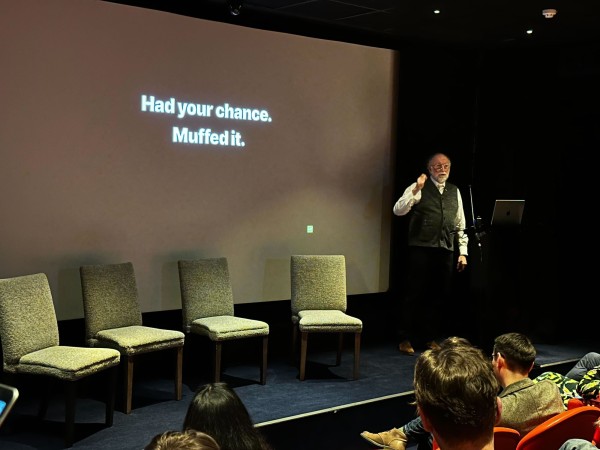
Deutsche Bank's Matthew Baxter talking about the need to humanise CX and empower employees to deliver it
Experience is owned by everyone in a business: accountability for delivery must be defined and shared
Next, came the panel debate where I hosted some truly brilliant, experienced professionals from a range of businesses: Bethan Lynch, Head of Experience, Customer Commerce at B&Q, Mark Howell, BP’s Global Director of Service Design and Business Design and Tim Simpson, UBS’ Head of Design.
I put to them first a question raised by the audience at our last breakfast event: Who actually ‘owns’ experience in a business?
Bethan emphasised that, while B&Q has a Director of Customer & Digital, the aspiration is to have a business-wide holistic approach that everyone owns. Tim highlighted UBS’ highly decentralised experience ownership structure at UBS: product owners across the business owning their own experiences. Design functions providing connectedness and standards and a centralised platform allowing owners to build joined-up experiences. Mark highlighted the size and complexity of BP, with tens of thousands of people working in over 60 countries, meaning the CXO could bring influence, consistency, and cohesion, but ultimate ownership and delivery for experience sat within the business.
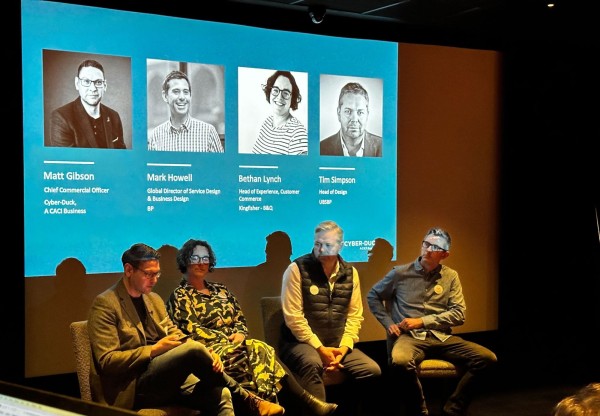
Total Experience panel featuring design experts from BP, B&Q and UBS
Great CX and EX requires active stakeholder alignment through great data, pragmatic engagement and training
The panel then discussed how you get buy-in across the entire organisation – from boardroom to front-line – for experience. Bethan highlighted the importance of a clear, simple strategy towards the organisation’s ‘big goal’, backed up by the right, transparent data available to everyone, not just ‘analysts’. Giving people access to uncomfortable truths and the autonomy to make better decisions based on these insights. All with the aim of breaking down the operational silos that the audience agreed were the major barrier to success.
Tim emphasised the role of collaboration. How bringing people round the table, facilitated by designers, can create shared understanding of products, ideas, behaviours, analytics and – critically – each other’s challenges, echoing the opening presentation of trying to find a win-win in organisations that can be highly political and competitive. Also underlining that designers need to be pragmatic, not purist to achieve that.
Mark talked about BP’s new operating model, Product Blueprint, that embedded a discovery process with small, multifunctional teams to derisk its design process - particularly for safety critical environments, products and systems. One that was mindful of colleague’s time constraints and operational efficiencies. This was a shift from a more distant, user research approach. They also run a programme of human-centred design boot camps for product managers and systems thinking training that gets people out into various parts of the business they’d never normally see.
These insights on collaboration and information sharing were backed up the findings from our polling of the audience what would have the biggest impact on improved CX/EX in their organisations.
For CX, the top answer (57%) was ‘removing barriers/friction in the customer journey’, followed by ‘better user research and data’ at 45% and ‘listening to employee feedback to inform business decisions’ at 30%. AI, barely got a look in at just 8%. This married up with the answers for biggest impact on EX: ‘transparency and open communication’ coming top at 29%, followed by ‘employee feedback informing business decisions’ at 24%.
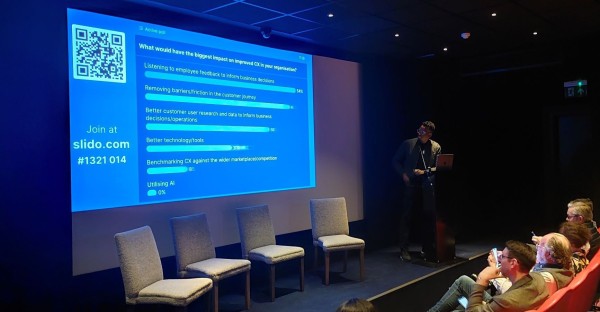
Siji Onabanjo polls the audience on the biggest barriers to CX in their organisations
Buzzwords come and go, but the need for measurable impact is a constant
Next, the panel took on my question about whether it’s necessary for leadership to really understand the latest language and process of design like Total Experience. And the panel were unanimous that it was really about delivering impacts.
Tim talked about how at UBS, it was about harmonising design language to business operations and prioritises, talking about end-to-end thinking, solutions and journey management. Mark strongly echoed these words, relating how at BP this approach in the current cost of living crisis was focused on viability and ROI, and that what was critical was an understanding of the disciplines needed to deliver it, be that software engineering, data analytics or user research. Bethan concurred, saying it was critical to explain design in the context of business vision and goals, ensuring it wasn’t ‘fluffy’ but deeply commercial, and ensuring that those impacts are measured rigorously and communicated effectively.
The future of Experience will see AI as a tool and design as a driver of change
My last question was where the panel saw Total Experience going in future and what role might much-vaunted AI play. Bethan was most bullish, hinting at some exciting plans at B&W to use AI in sewing together different products and experiences to create meaningful customer solutions. Tim related how UBS had been playing in sandboxes with AI and now really looking at how it might help and augment existing processes, but always with a human-centric lens. Mark skipped AI and said the future was about understanding how design impacts colleagues in order to ensure the adoption of new ideas and processes, and so why BP’s Design team had been expanded to include Design and Change Management, which is where my roundup started.
What came through from the whole discussion, and audience questions about embedding Total Experience in practice, is that design has a critical role to play in transforming businesses today - but only when it’s economically, operationally and culturally feasible. As a service design and digital strategy agency we possibly have it easier being outside the organisational system playing that facilitating role and helping to embed change. But either way, we all left the room with a huge appetite to make it happen.
If you want help to uncover where the experience and user journey pain points are in your organisation, break down operational silos and deliver on digital transformation to meet your business outcomes, visit our Service Design page to find out more about how we can help or get in touch with our experts today.
